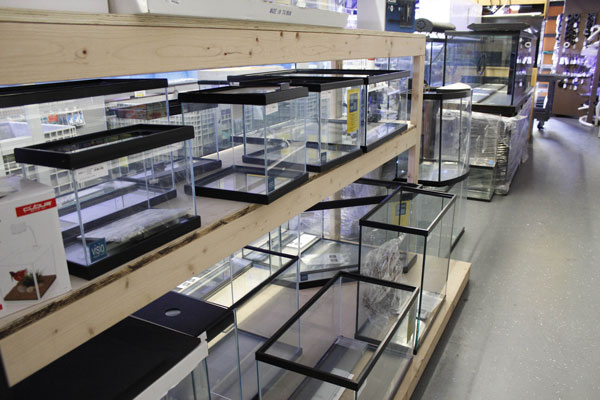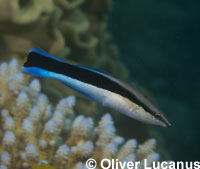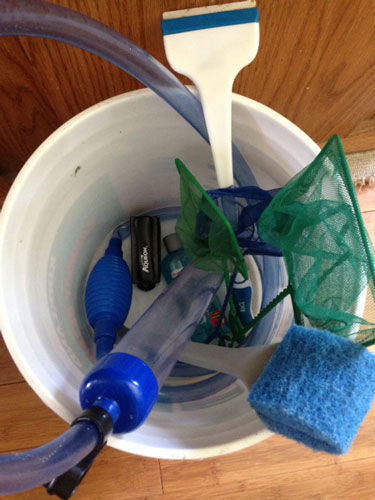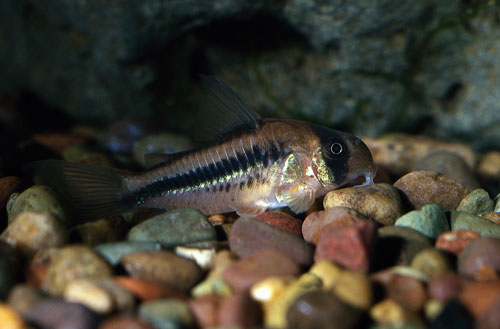Having pond plants is one of the best ways to keep your water garden healthy. The process of photosynthesis, which takes place during the day with the presence sunlight, helps the pond to be well aerated. The energy and oxygen produced by this process helps the creatures the dwell in the water to have plenty of air to breathe. Not to mention the presence of beneficial bacteria in the bio filter which are responsible for the conversion of ammonia to nitrates.
Aside from the fact that pond plants beautify a fish pond or a water garden even more, they also serve a valuable purpose in the balance of the entire eco system. Aquatic plants like lily pads and water cress are use to effectively compete with green water for phosphates and nitrates which result from the nitrogen cycle. If fewer nitrates are consumed by the algae in the pond, there will be a smaller chance for algae bloom.
The ideal number of aquatic plants to be used in a fish pond or a water garden per square meter of surface area is 1 big water lily, 1 bog plant and 2 bunches of oxygenators. And by ideal it means that you can still vary it up a bit to fit to your water garden and to your preferences as well.
The usual aquatic plant species that is used in fish ponds and water gardens is the water lily. This type of plant come is pads and can survive in pond water not shallower than 60cm. keep in mind that plants grow in size. This means that you must not be to enthusiastic in putting plants in your pond or else they may overtake the whole area and mess up the balance of the eco system.
For you to be able to put the right plant species in your pond here are 6 different aquatic plant categories. Each aquatic plant differs according to its habitat, size and function in the water garden.
The first category is the water lily. It is also the most common of all aquatic plants used in ponds. Also known as Lotus Flower, this type grows vigorously that’s why it is important to not put too many of this in your pond. The ideal part of the water system for aquatic plants is 2/3 of the water’s surface. The main function of water lilies in ponds is to beautify it.
If you want your pond to be abundant in oxygen, then go for the oxygenators. As the name suggests, this aquatic plant category provides the pond a good source of oxygen once totally submerged in water. Oxygenators either float in the water or stay on the soil once planted. Examples are Water crowfoot; Water violet, Hornwort and Parrots feather.
Another category is the floating pond plants. These plants don’t necessarily need soil to live. They have roots that dangle down as if hair strands. Just like water lilies, these plants are used to add up to the already existing aesthetic value of the water garden or the pond.
If you find plants around the edges of the pond, those belong to the category of emerging marginal pond plants. They normally grow in the water where the depth is 6�. To avoid blowing over, these plants are affixed on rocks or pebbles.
Marginals is another pond plant category which pertains to the plants found in the shallow areas of the water system. The plants in this category include Bog Primula, Reed Mace, Pickerel, Water Buttons and the Marsh Marigold which are capable of existing even in muddy areas of the pond that’s why they are oftentimes mistaken to be a part of the bog plants category.
Bog plants are those that stay in muddy or boggy areas of the water system where there is enough shade. These plants survive in about 2� of water exposure. They die in the winter and flourish in the summer. Examples include: Lobelias, Goats beard, Yellow star flowers, and scarlet flowers.

 Five Tips for Freshwater Aquarium Success
You spent countless hours researching the latest products to
Five Tips for Freshwater Aquarium Success
You spent countless hours researching the latest products to
 Cleaner Wrasse
Cleaner Wrasse
 What to Keep in Your Aquarium Maintenance Bucket
It is too easy for hobbyists, especially new ones, to become
What to Keep in Your Aquarium Maintenance Bucket
It is too easy for hobbyists, especially new ones, to become
 Top 10 Fishkeeping Mistakes
Aquarists can say they’ve never made a mistake in their fish
Top 10 Fishkeeping Mistakes
Aquarists can say they’ve never made a mistake in their fish
 Useful Idea For Stronger Nutrition And Wellness
It truly does show when you take time to create a proper no
Useful Idea For Stronger Nutrition And Wellness
It truly does show when you take time to create a proper no